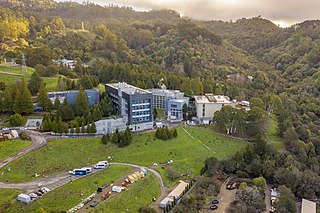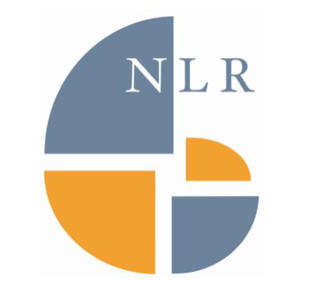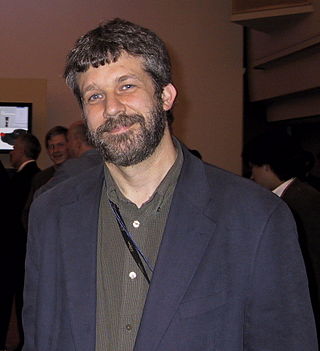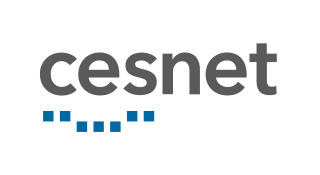
GÉANT is the pan-European data network for the research and education community. It interconnects national research and education networks (NRENs) across Europe, enabling collaboration on projects ranging from biological science, to earth observation, to arts and culture. The GÉANT project combines a high-bandwidth, high-capacity 50,000 km network with a growing range of services. These allow researchers to collaborate, working together wherever they are located. Services include identity and trust, multi-domain monitoring perfSONAR MDM, dynamic circuits and roaming via the eduroam service.

Lawrence Berkeley National Laboratory (LBNL) is a federally funded research and development center in the hills of Berkeley, California, United States. Established in 1931 by the University of California (UC), the laboratory is sponsored by the United States Department of Energy and administered by the UC system. Ernest Lawrence, who won the Nobel prize for inventing the cyclotron, founded the Lab and served as its Director until his death in 1958. Located in the Berkeley Hills, the lab overlooks the campus of the University of California, Berkeley.

Internet2 is a not-for-profit United States computer networking consortium led by members from the research and education communities, industry, and government. The Internet2 consortium administrative headquarters are located in Ann Arbor, Michigan, with offices in Washington, D.C., and Emeryville, California.

Abilene Network was a high-performance backbone network created by the Internet2 community in the late 1990s. In 2007 the Abilene Network was retired and the upgraded network became known as the "Internet2 Network".

The United States Department of Energy National Laboratories and Technology Centers is a system of laboratories overseen by the United States Department of Energy (DOE) for scientific and technological research. The primary mission of the DOE national laboratories is to conduct research and development (R&D) addressing national priorities: energy and climate, the environment, national security, and health. Sixteen of the seventeen DOE national laboratories are federally funded research and development centers administered, managed, operated and staffed by private-sector organizations under management and operating (M&O) contracts with the DOE. The National Laboratory system was established in the wake of World War II, during which the United States had quickly set-up and pursued advanced scientific research in the sprawling Manhattan Project.

National LambdaRail (NLR) was a 12,000-mile (19,000 km), high-speed national computer network owned and operated by the U.S. research and education community. In November 2011, the control of NLR was purchased from its university membership by a billionaire Patrick Soon-Shiong. NLR ceased operations in March 2014.
NORDUnet is an international collaboration between the National research and education networks in the Nordic countries.
The Corporation for Education Network Initiatives in California is a nonprofit corporation formed in 1997 to provide high-performance, high-bandwidth networking services to California universities and research institutions. Through this corporation, representatives from all of California's K-20 public education combine their networking resources toward the operation, deployment, and maintenance of the California Research and Education Network, or CalREN. Today, CalREN operates over 8,000 miles of fiber optic cable and serves more than 20 million users.

Charlie Catlett is a senior computer scientist at Argonne National Laboratory and a visiting senior fellow at the Mansueto Institute for Urban Innovation at the University of Chicago. From 2020 to 2022 he was a senior research scientist at the University of Illinois Discovery Partners Institute. He was previously a senior computer scientist at Argonne National Laboratory and a senior fellow in the Computation Institute, a joint institute of Argonne National Laboratory and The University of Chicago, and a senior fellow at the University of Chicago's Harris School of Public Policy.
The Pittsburgh Supercomputing Center (PSC) is a high performance computing and networking center founded in 1986 and one of the original five NSF Supercomputing Centers. PSC is a joint effort of Carnegie Mellon University and the University of Pittsburgh in Pittsburgh, Pennsylvania, United States.

The National Energy Research Scientific Computing Center (NERSC), is a high-performance computing (supercomputer) National User Facility operated by Lawrence Berkeley National Laboratory for the United States Department of Energy Office of Science. As the mission computing center for the Office of Science, NERSC houses high performance computing and data systems used by 9,000 scientists at national laboratories and universities around the country. Research at NERSC is focused on fundamental and applied research in energy efficiency, storage, and generation; Earth systems science, and understanding of fundamental forces of nature and the universe. The largest research areas are in High Energy Physics, Materials Science, Chemical Sciences, Climate and Environmental Sciences, Nuclear Physics, and Fusion Energy research. NERSC's newest and largest supercomputer is Perlmutter, which debuted in 2021 ranked 5th on the TOP500 list of world's fastest supercomputers.

CESNET is developer and operator of national e-infrastructure for science, research, development and education in Czech Republic. The CESNET association was founded in 1996 by Czech public universities and the Academy of Sciences of the Czech Republic. An important part of CESNET's activities is research of advanced network technologies and applications from hybrid networking, programmable hardware, metacomputing to middleware and video transmissions. CESNET fulfils the role of NREN within the Czech Republic and represents it in international organisations such as the GÉANT Association, EGI and GLIF. CESNET is involved in the implementation of the European backbone network project called GÉANT. Within the Czech Republic CESNET fulfils the role of a coordinator of large infrastructures involved in the field of information technology.
40 Gigabit Ethernet (40GbE) and 100 Gigabit Ethernet (100GbE) are groups of computer networking technologies for transmitting Ethernet frames at rates of 40 and 100 gigabits per second (Gbit/s), respectively. These technologies offer significantly higher speeds than 10 Gigabit Ethernet. The technology was first defined by the IEEE 802.3ba-2010 standard and later by the 802.3bg-2011, 802.3bj-2014, 802.3bm-2015, and 802.3cd-2018 standards. The first succeeding Terabit Ethernet specifications were approved in 2017.
The Oak Ridge Leadership Computing Facility (OLCF), formerly the National Leadership Computing Facility, is a designated user facility operated by Oak Ridge National Laboratory and the Department of Energy. It contains several supercomputers, the largest of which is an HPE OLCF-5 named Frontier, which was ranked 1st on the TOP500 list of world's fastest supercomputers as of June 2023. It is located in Oak Ridge, Tennessee.
The Office of Science is a component of the United States Department of Energy (DOE). The Office of Science is the lead federal agency supporting fundamental scientific research for energy and the Nation’s largest supporter of basic research in the physical sciences. The Office of Science portfolio has two principal thrusts: direct support of scientific research and direct support of the development, construction, and operation of unique, open-access scientific user facilities that are made available for use by external researchers.

The Ethernet Alliance was incorporated in the US state of California in August 2005 and officially launched in January 2006 as a non-profit industry consortium to promote and support Ethernet. The objectives were to provide an unbiased, industry-based source of educational information; to ensure interoperability among disparate, standards-based components and systems; to support the development of standards that support Ethernet technology; and to bring together the Ethernet industry to collaborate on the future of the technology.
A dynamic circuit network (DCN) is an advanced computer networking technology that combines traditional packet-switched communication based on the Internet Protocol, as used in the Internet, with circuit-switched technologies that are characteristic of traditional telephone network systems. This combination allows user-initiated ad hoc dedicated allocation of network bandwidth for high-demand, real-time applications and network services, delivered over an optical fiber infrastructure.
Terabit Ethernet (TbE) is Ethernet with speeds above 100 Gigabit Ethernet. The 400 Gigabit Ethernet and 200 Gigabit Ethernet standard developed by the IEEE P802.3bs Task Force using broadly similar technology to 100 Gigabit Ethernet was approved on December 6, 2017. On February 16, 2024 the 800 Gigabit Ethernet standard developed by the IEEE P802.3df Task Force was approved.
The term Science DMZ refers to a computer subnetwork that is structured to be secure, but without the performance limits that would otherwise result from passing data through a stateful firewall. The Science DMZ is designed to handle high volume data transfers, typical with scientific and high-performance computing, by creating a special DMZ to accommodate those transfers. It is typically deployed at or near the local network perimeter, and is optimized for a moderate number of high-speed flows, rather than for general-purpose business systems or enterprise computing.
The Open Commons Consortium is a 501(c)(3) non-profit venture which provides cloud computing and data commons resources to support "scientific, environmental, medical and health care research." OCC manages and operates resources including the Open Science Data Cloud, which is a multi-petabyte scientific data sharing resource. The consortium is based in Chicago, Illinois, and is managed by the 501(c)3 Center for Computational Science Research.












